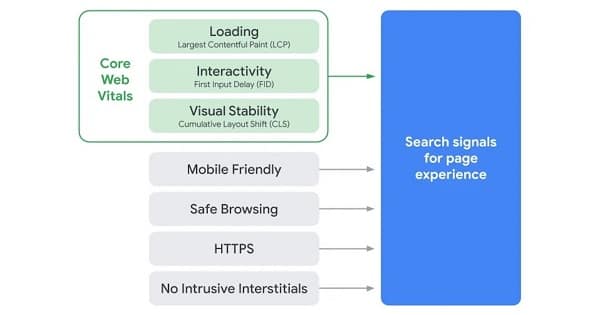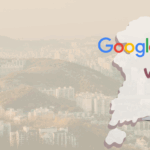So far the 2020s has been a decade of changes in the Digital Marketing field. User behavior changed dramatically in the APAC region and worldwide, since the pandemic forced many shoppers to increase their online shopping. While many people have returned to brick-and-mortar stores now that lockdowns are over, there still remains a noticeable uptick in households who use online shopping for at least some everyday goods like groceries.
In 2021, Google introduced the ranking factor – Core Web Vitals. This encompasses factors that affect user experience, such as “loading performance, interactivity, and visual stability” (Google). Slow, laggy websites are out. Google wants sites that are easy and comfortable to navigate and use.
Moreover, the 2020s have seen the rise of AI has changed the game for digital marketers and users alike. As mentioned in another article, Google’s, as well as other search engines’, algorithms are shaped by AI, and can determine who will see your ad or website. Some users are also starting to use AI tools like ChatGPT or Naver Clova X (Naver AI) to search for information, instead of directly submitting a search query to a search engine. The way internet users find and are exposed to information is being changed by AI, and these changes are likely to develop more in the future.
If you are starting an International SEO Strategy in 2025, we have a few suggestions that might be useful to help your rankings in the current situation.
Choose the right URL Structure
When working on SEO for an international website, your team will have to face some complex site architecture decisions. One of the most important is which method will you use to determine your URL structure for each of your countries. Choosing is not that easy and depends on many factors related to your business:
- ccTLD: Use two-letter codes to indicate to search engines and users in which country a particular site is registered (e.g., example.co.uk). This makes especially sense for languages that are spoken only in one country or if that country has any specific legal requirements (e.g., Ranking in Baidu, China or Yandex, Russia).
- Subdomain: When internationalized content is placed on a separate “third-level domain” (e.g., uk.example.com). This strategy allows you to target specific languages or countries, but is not particularly recommended for SEO purposes.
- Subdirectory: The content is placed in a specific subdirectory of a root domain (e.g., example.com/uk).
- gTLD with language parameters: When a general domain is targeted to speakers of a specific language by creating a URL parameter (e.g., example.com/?lang=en-uk)
- Different domain: Creating an entirely different root domain (e.g., exampleuksite.com)
Every technique has its pros and cons, including the difficulty of implementation and SEO benefits. That is why it is recommended to investigate them further and implement the one that better aligns with your business objectives.
Implement Hreflangs
A hreflang tag is an HTML attribute that tells Google and other search engines that different language or country versions of the same page are related, so it can serve the right content to the correct users worldwide. We can use this tag to avoid duplicate content across country versions. Typically, a hreflang attribute looks like this:
<link rel=”alternate” href=”https://www.site.com” hreflang=”ko-kr”>
This attribute can be placed in the on-page markup, the HTTP header, or the sitemap, but only use one of those locations. Also, note that Hreflangs does not work with Bing or Baidu, which use the content-language meta tag:
<meta http-equiv=”content-language” content=”ko-kr”>
Focus on Localization
Thinking more locally is a key piece to success in International SEO since it is going to help your business to get a better share of voice, get more quality leads, and increase revenue.
Make sure you are providing information that is tailored to your user’s language and culture. That includes not only using the local language, timezone, and currency but also localizing the website design and style.
We have seen many mistakes regarding translations and localization. The first one is to avoid machine translation. Plugins cannot understand the nuances of the languages and the copy might end up looking odd or unprofessional for a native reader. In a similar way, creating websites that mix two languages (for example, local language for the main page, English for the rest) is not advisable.
These practices might harm your brand credibility and consumer trust. We recommend making sure that everything from your site navigation, to your content and help contact information is in the primary language of the region you are targeting.
Optimize your Page Experience
If you have not updated your site since 2021, now is the time to start improving your Core Web Vitals and Page Experience Signal.

These are the main elements that will determine the on-page experience starting from May 2021.
- Core Web Vitals: This measures the visual loading, interactivity and stability of a page when it is loading and includes three key performance metrics (Largest Contentful Paint, Firs Input Delay and Cumulative Layout Shift).
- Mobile Friendliness: Determines how easy it is to navigate a website from mobile devices, with a special focus on readability and accessibility of clickable elements.
- HTTPS, Safe Browsing and Non-intrusive interstitial: This looks at how secure your website is. Do you have a bunch of pop-up ads? Does it use HTTPS, or the less secure HTTP encryption? Does Google Safe Browsing tool see your site as safe for users to submit their information, or as at risk for data leaks and malware?
Analyze the SERPs (Search Engine Results Pages)
SERPS can differ widely on a local level in Google, even when answering the exact same query. That is why, when you are targeting a specific keyword in your international SEO strategy for several countries, you should start by analyzing the SERPs. The same keyword might have very different search volumes depending on the region (or even a different meaning). Take this into account when creating your strategy.
International Link Building
If you want to get high-quality links on your multilingual site, it is time to start thinking about an international link building strategy. First, you need great content in the different languages you are targeting. You will also want to learn which are the most influential websites of your niche in every country. Building links from local resources can help your visibility and organic traffic to grow but beware of black-hat SEO link building.
Other International SEO Checklist recommendations
- Host your site on a local IP.
- Don’t forget about local search engines like Baidu, Naver, or Yandex.
- Stay on top of international and local search trends.
- Automate time-consuming processes.





